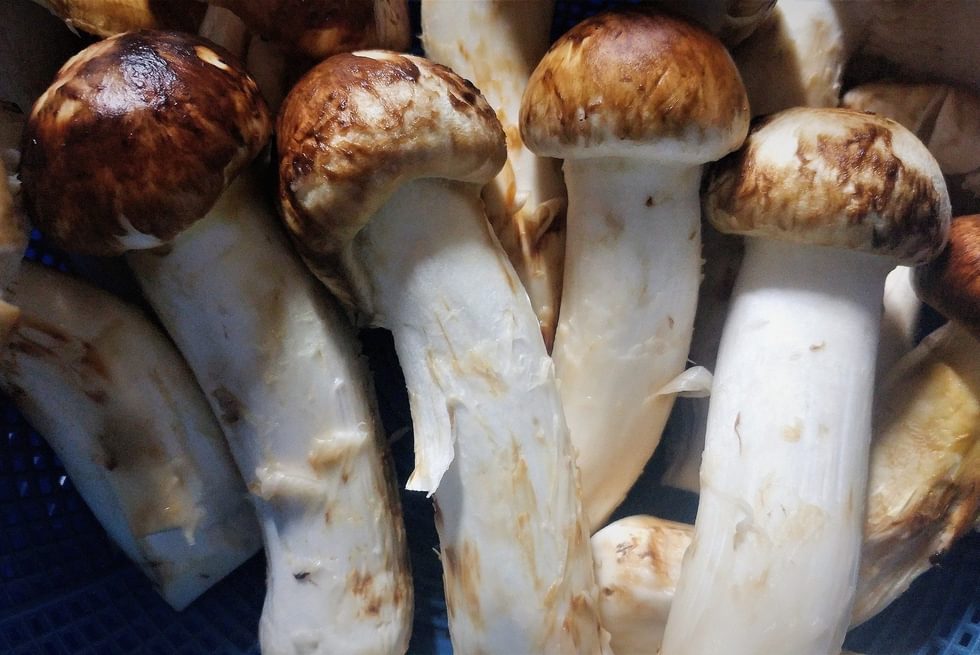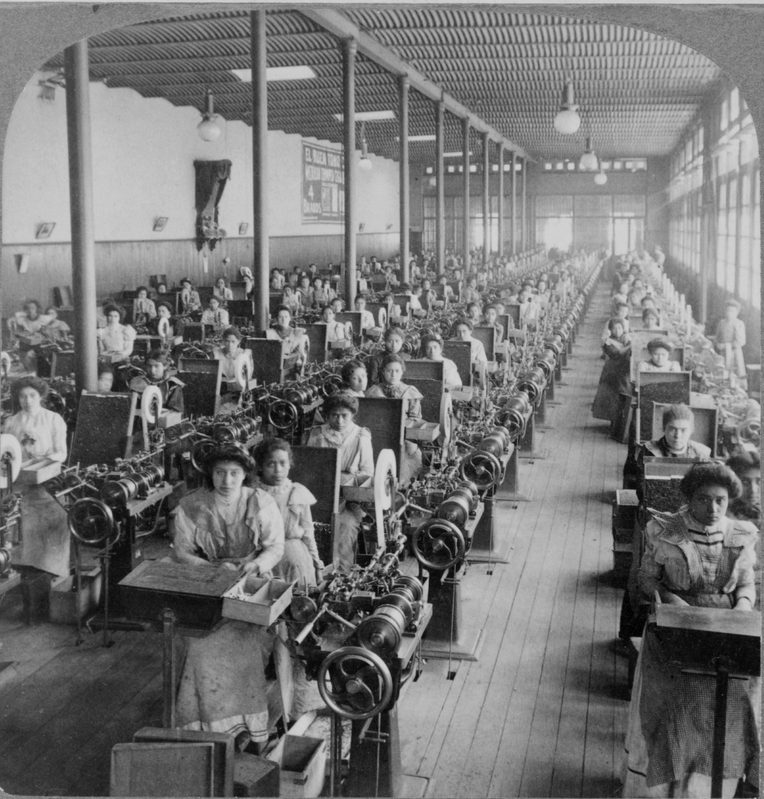Work and Nonwork in Pericapitalist Sites
From the Series: Bateson Book Forum: The Mushroom at the End of the World
From the Series: Bateson Book Forum: The Mushroom at the End of the World

Reading The Mushroom at the End of the World is both pacifying and energizing in a moment that seems increasingly like The End. The book asks its readers to cultivate a new perspective, to appreciate the messy complexity of life itself. Tsing’s (2015, 37) call to cultivate the “arts of noticing” provides a way of engaging with the world that insists we abandon progress narratives for the ruin and resurgence made possible through multispecies entanglements. It asks us to “look around rather than ahead” (Tsing 2015, 22), to search for possibilities in “latent commons” (135). It requires storytelling with and through the senses, as well as the space to admit that our narratives capture only a sliver of the lifeworlds that make history.

Bringing this perspective to bear on supply chains is an intriguing project. For me, what’s most exciting about Tsing’s approach is her attention to the processes of entanglement and translation at the heart of capitalist accumulation. As Tsing (2005) has suggested previously, the generative friction of capitalism happens in gaps and patches. She extends this account further in The Mushroom at the End of the World, arguing that multispecies collaborations and noncapitalist forms of production and value are not external to supply chains but are instead key mechanisms for capitalist accumulation. This argument forces us to examine capitalism through its gaps, a perspective that both requires and challenges the dichotomies between capitalist and noncapitalist, or commodity and gift. The term pericapitalist is one way that Tsing attempts to bridge, yet maintain these distinctions. It describes sites of capitalist accumulation that are “simultaneously inside and outside capitalism” (Tsing 2015, 63).
Attending to pericapitalist sites opens up many exciting avenues of inquiry, but here I’d like to focus on a point explored only briefly in the book: how pericapitalist sites alter our conceptions of work. Tsing problematizes the idea of disciplined labor as central to capitalist production in two ways: by sharing matsutake pickers’ descriptions of foraging as an expression of freedom and an alternative to their work in the city, and through her insistence that commodities are the result of multispecies collaborations. How do our understandings of labor change if we think about supply chains as resting on the “transformative mutualism” (Tsing 2015, 40) of nonhuman lifeworlds? And what happens when capitalist accumulation occurs through patchy forms of labor that are not understood as such? Tsing’s descriptions of what mushrooms mean for pickers demonstrate that work is not always understood as work, that livelihood is not always conceived as labor. Pericapitalist sites allow us to see the spaces and practices where lines between work and nonwork are blurred, while also understanding them as sites of “salvage accumulation” (Tsing 2015, 63).
I’ve been thinking about the categories of work and nonwork as I write a dissertation that examines the fresh fruit and vegetable supply chain that connects periurban farmers with urban consumers in Bengaluru, India. Over the course of my research, I found that what makes people—farmers and city residents alike—nervous about the future of agriculture is whether anyone will be left to do the work of food production. As India’s IT capital, Bengaluru has witnessed rapid urbanization that has altered its landscapes and livelihood structures over the past thirty years. In this context, periurban agriculture is becoming increasingly precarious, and many agriculturalists and landless laborers have given up farming for work in the city. Yet as farmers abandon agriculture as a source of livelihood, urban professionals are drawn to it. In Bengaluru today there is a growing trend among IT professionals who reside in the city to purchase agricultural land at the urban margins, so that they can participate in basic farming activities on the weekend (they hire local farmers to manage their farms in their absence). These professionals position their work on the farm as qualitatively different from their office jobs, and many of them talk about farming as a more productive use of their weekends than common urban middle- and upper-class leisure activities such as visiting malls and restaurants.
This trend is more complex than the description I have offered here, but I do want to emphasize one key point: the global supply chains and expanding urban landscapes that make farming an increasingly insecure livelihood for farmers are the same forces that make farming appear to be an escape for IT professionals. Understanding this requires us to reconsider the distinctions made between kinds of work and associated forms of livelihood and well-being, distinctions that cannot be easily understood through Marxist theorizations of labor. What value, I wonder, does farm work generate for farmers? For IT professionals? How does the category of work change in these contexts? How do these different formulations map onto capitalism and noncapitalism?
The links between labor and livelihood at the heart of these questions have already come under scrutiny. For example, Jean Baudrillard (1975, 17) argues that Marx’s treatment of labor traps his analysis in the very terms of political economy that he hoped to subvert, since the “romanticism of productivity” remains at the heart of Marxist theories of value. Building from critiques of Marxist valuations of labor, Kathi Weeks (2011) lays the groundwork for a future built around an ethics of nonwork. And, more recently, James Ferguson (2015) has considered how new distributive politics undermine the longstanding link between labor and welfare.
I wonder, however, to what extent these reformulations of work and well-being miss how capitalist accumulation is made possible by activities perceived as alternatives to capitalist labor. Here, pericapitalist sites might offer us a way forward. As Tsing (2015, 94) argues, matsutake supply chains generate wealth despite the absence of formalized labor: “Without any corporate recruitment, training, or discipline, mountains of mushrooms are gathered and shipped to Japan.” But can discipline be made in performances of freedom? Is freedom its own kind of work? Elsewhere, Tsing (2009, 168) has argued that the ideals of entrepreneurship disguise the self-exploitation at the heart of supply chains. This leads me to wonder: where does work end and nonwork begin in pericapitalist spaces? Is there any difference between nonwork and work in terms of capitalist value creation? At the same time, do we lose something important about the lived realities of these distinctions if we insist that people are mistaken when they understand their presence in the forest or the agricultural fields as other-than-work?
These are questions about the limitations of understanding the distinctions between capitalist and noncapitalist work and nonwork. Tsing’s work challenges us to ask how far we can deconstruct these dichotomies, and what needs to remain in order to make visible the patchiness of capitalist accumulation.
Baudrillard, Jean. 1975. The Mirror of Production. Translated by Mark Poster. New York: Telos. Originally published in 1973.
Ferguson, James. 2015. Give a Man a Fish: Reflections on the New Politics of Distribution. Durham, N.C.: Duke University Press.
Tsing, Anna Lowenhaupt. 2005. Friction: An Ethnography of Global Connection. Princeton, N.J.: Princeton University Press.
_____. 2009. “Supply Chains and the Human Condition.” Rethinking Marxism 21, no. 2: 148–76.
_____. 2015. The Mushroom at the End of the World: On the Possibility of Life in Capitalist Ruins. Princeton, N.J.: Princeton University Press.
Weeks, Kathi. 2011. The Problem with Work: Feminism, Marxism, Antiwork Politics, and Postwork Imaginaries. Durham, N.C.: Duke University Press.